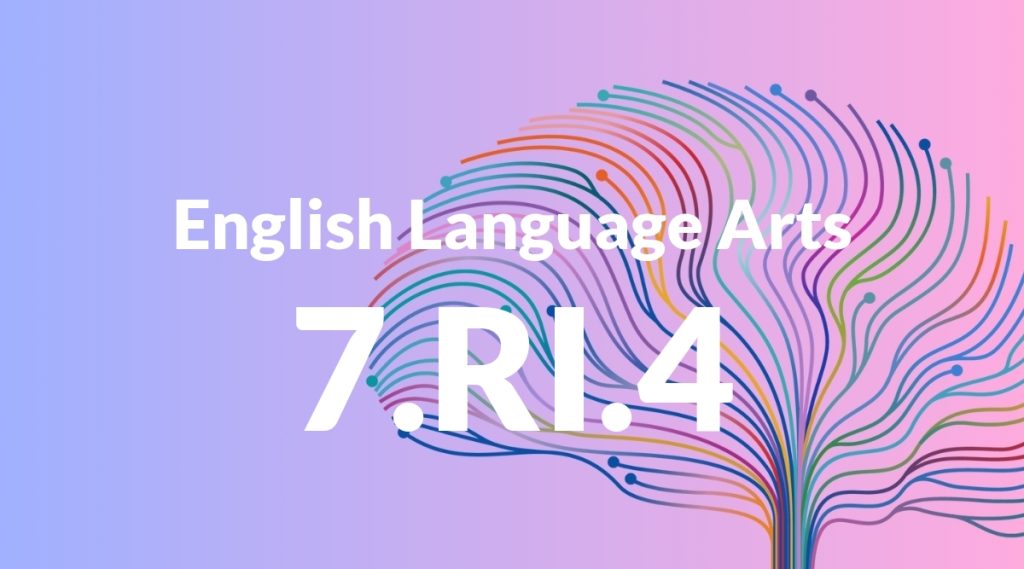Standard: 7.RI.4 – Determine the meaning of words and phrases as they are used in a text, including figurative, connotative, and technical meanings; analyze the impact of a specific word choice on meaning and tone.
Grade level: Grade 7
Subject: English Language Arts
Domain: Reading: Informational Text
Teacher Overview
This standard focuses on helping students understand and analyze the meaning of words and phrases in a text, including figurative, connotative, and technical meanings. It also emphasizes the impact of specific word choices on the overall meaning and tone of the text. This skill is crucial for developing critical reading abilities and understanding complex texts. Students should have a foundational understanding of different types of language, including literal and figurative, and be able to use context clues to infer meaning.
After mastering this standard, students will be able to critically analyze texts, understanding how word choice affects meaning and tone, and apply this skill in both academic and real-world contexts.
Common Misconception 1
Some students may believe that words have a single, fixed meaning regardless of context. This is incorrect because words can have multiple meanings depending on how they are used in different contexts.
Intervention 1
Provide exercises that involve using context clues to determine the meaning of words in different sentences. Use dictionaries to explore various meanings of words.
Common Misconception 2
Students might think that figurative language should be interpreted literally. This is incorrect because figurative language uses creative comparisons to convey meanings that are not meant to be taken literally.
Intervention 2
Use familiar examples of figurative language, such as idioms or metaphors, to demonstrate how they convey deeper meanings beyond the literal interpretation.
Prerequisite Knowledge
Students should have a basic understanding of different types of words and phrases, including literal and figurative language, and should be able to identify and understand context clues within a text.
Subsequent Knowledge
Students will develop the ability to critically evaluate texts, understanding how word choice influences meaning and tone, and apply this skill to both academic and real-world texts.
Instructional Activities
- Context clue exercises with varied sentences
- Group discussions analyzing word choices in different texts
- Comparative analysis of literal vs. figurative language
- Projects decoding technical terms in subject-specific articles
- Interactive games identifying connotative meanings




